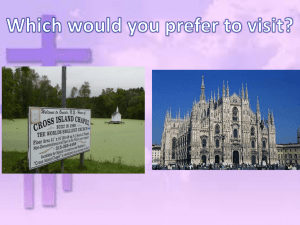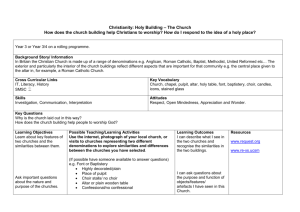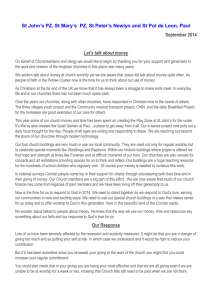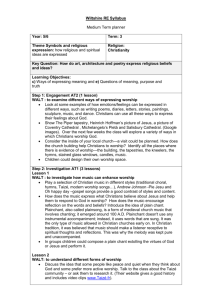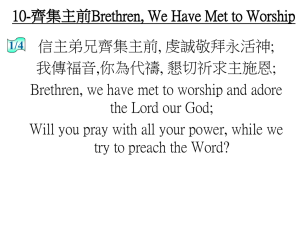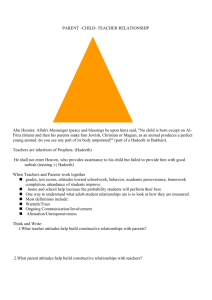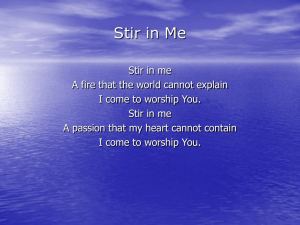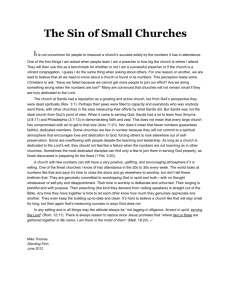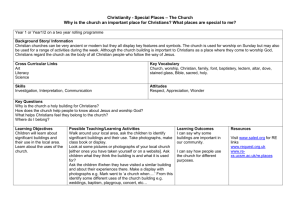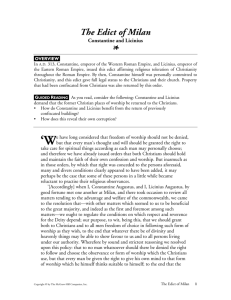Christianity: Y1 Special places and symbols
advertisement
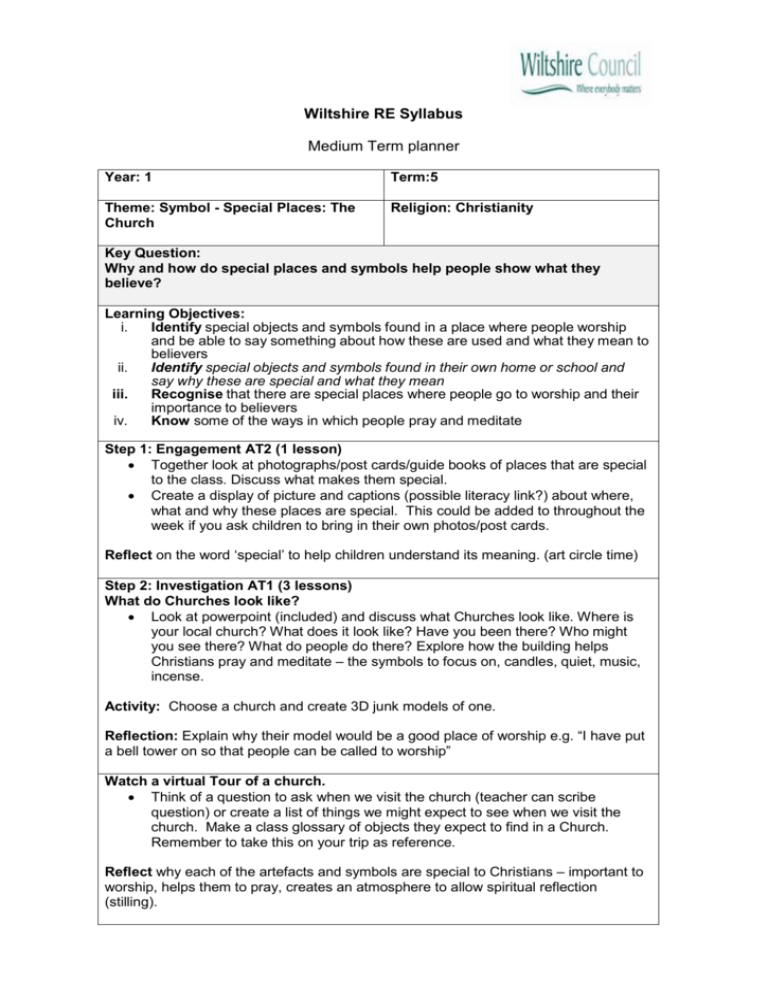
Wiltshire RE Syllabus Medium Term planner Year: 1 Term:5 Theme: Symbol - Special Places: The Church Religion: Christianity Key Question: Why and how do special places and symbols help people show what they believe? Learning Objectives: i. Identify special objects and symbols found in a place where people worship and be able to say something about how these are used and what they mean to believers ii. Identify special objects and symbols found in their own home or school and say why these are special and what they mean iii. Recognise that there are special places where people go to worship and their importance to believers iv. Know some of the ways in which people pray and meditate Step 1: Engagement AT2 (1 lesson) Together look at photographs/post cards/guide books of places that are special to the class. Discuss what makes them special. Create a display of picture and captions (possible literacy link?) about where, what and why these places are special. This could be added to throughout the week if you ask children to bring in their own photos/post cards. Reflect on the word ‘special’ to help children understand its meaning. (art circle time) Step 2: Investigation AT1 (3 lessons) What do Churches look like? Look at powerpoint (included) and discuss what Churches look like. Where is your local church? What does it look like? Have you been there? Who might you see there? What do people do there? Explore how the building helps Christians pray and meditate – the symbols to focus on, candles, quiet, music, incense. Activity: Choose a church and create 3D junk models of one. Reflection: Explain why their model would be a good place of worship e.g. “I have put a bell tower on so that people can be called to worship” Watch a virtual Tour of a church. Think of a question to ask when we visit the church (teacher can scribe question) or create a list of things we might expect to see when we visit the church. Make a class glossary of objects they expect to find in a Church. Remember to take this on your trip as reference. Reflect why each of the artefacts and symbols are special to Christians – important to worship, helps them to pray, creates an atmosphere to allow spiritual reflection (stilling). Visit a Church Arrange a visit to your local Church. Ask children to label parts of the building and things they can find inside. Discuss what they have found. You may want to produce an activity sheet where children are asked to find objects using photographs or check off their list they made during last lesson. Consider inviting a vicar to share a Bible story, or a bell ringer, or the organ player, singing a hymn or song. Step 3: Evaluation AT 2 (1 lesson) Recap the visit: where we went, what we saw, what we found out. How did we feel when we were there? Were we surprised by anything? Possible ICT link: Record children’s responses to the questions. Use talking photo album experiences by picture/audio. Step 4 Expression AT 2 (1 lesson) Create a class ‘special area’. Discuss what we would want in it and how would it help us to reflect, relax and express our feelings. Evidence: Special places display Junk model Talking book/recordings Photos from the trip Questions Check list Class glossary Step 1 Engagement Skills: Asking relevant questions Skills and Attitudes focus in this enquiry Step 2 Step 3 Investigation Evaluation Skills Skills: Asking relevant questions Kowing how to use different types of sources as a way of gathering information Draw meaning from stories, artefacts, works of art, poetry and symbolism Reflect on on feelings, relationships, experience, ultimate questions, beliefs and practices Step 4 Expression Skills: Reflect on on feelings, relationships, experience, ultimate questions, beliefs and practices Making links between religions and individual, community life Attitudes: Attitudes Attitudes: Attitudes: Appreciating the sense of wonder at the world in which they live Feeling confident about their own beliefs and identity and sharing them without fear of embarrassment or ridicule Developing their capacity to respond to questions of meaning and purpose Being sensitive to the feelings and ideas of others Being ready to value difference and diversity for the common good Developing skills of listening and a willingness to learn from others, even when others‟ views are different from their own Being willing to learn and gain new understanding AT1 Levelled Learning Outcomes AT2 Levelled Outcomes Level 1 I can name a Church from a picture I can recognise which artefacts belong to a Church . I can say why the artefacts are important to Christians. Level 1 I can talk about things that matter most to me. I can talk about things that matter most in a Church. I can talk about my own ideas about what makes a building special or precious or holy. Level 2 Suggest two things that matter to a Christian Give a reason why Christians go to Church Level 2 Suggest some things that are precious that money can’t buy. L Resources: Collection of photographs/postcards/guide books ect of different special buildings. Collection of pictures of different churches www.request.org.uk Follow links to infants then church buildings. Virtual tour of church http://www.request.org.uk/main/churches/tours/tours.htm Teacher Reflection: WWW EBI

